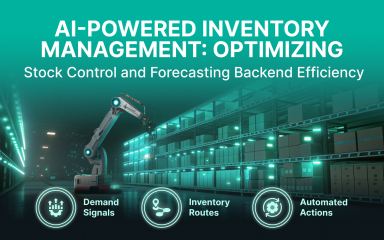According to IRCE, the growth of B2B eCommerce is surpassing that of B2C merchants by over 100%, while Forrester estimated that B2B eCommerce will total $1.1T, making up 12.1% of all B2B sales by 2020.
Manufacturers, wholesalers and retailers who invest in B2B eCommerce are experiencing higher profits than their competitors who don’t have a full-function eCommerce website.
The rapid growth in B2B eCommerce is driven by customer expectations and advance in technology.
B2B buyers are expecting the same options and convenience they experience as private consumers when they do their research and place their orders. This trend is becoming more prominent as more Millennials are involved in B2B purchasing decisions.
Meanwhile, technological advance makes it possible for B2B merchants to implement eCommerce websites with capabilities to handle complex configuration, purchasing, payment, and re-ordering processes.
Setting up a B2B eCommerce platform could involve a sizable upfront cost. However, it’ll be well worth the investment in the long run. The following strategies will help you increase your ROI:
1. Search Engine Optimization
Your eCommerce site should be search engine optimized so you can be found online:
- Ensure your site is mobile-friendly
- Research and use keywords to reach the right audience
- Optimize page titles and meta descriptions for each landing page
- Avoid duplicate content issue by adding unique copy on category, subcategory and product pages so search engines don’t penalize your website for duplicate content
- Implement structured data to help search engine better interpret content

- Submit an XML sitemap to help search engines crawl and index the appropriate pages on your website
2. Inbound Marketing And Content Marketing
According to Hubspot, 76 percent of B2B companies are likely to use inbound methodology as the marketing approach of choice.
Well-design inbound marketing strategies, often supported by robust content marketing plans, have proven to generate high ROI.

Inbound marketing is particularly useful for lead generation by attracting potential customers to your website and educating them about your products.
Here’s how to make inbound marketing and content marketing work for your B2B eCommerce website:
- Use buyer personas to inform the creation of targeted content for your potential customers
- Understand the psychology of your prospects in all stages of their customer journey

- Map your content creation strategy to your buyer personas, addressing their questions and concerns at each stage of their customer journey
- Research the best venues to distribute and promote your content
- Capture and nurture leads by offering additional relevant and valuable content
- Use segmentation and retargeting to ensure content-audience match
- Use rich content at product level, e.g. product demo, to create an engaging user experience and appeal to prospects at the decision-making stage
- Ensure seamless collaboration and communication between your inbound marketing and inbound sales team
3. Easy Ordering And Reordering
The ultimate objective of your B2B eCommerce website is to drive conversion. Therefore, it’s important to offer a user experience that facilitates the ordering and reordering processes for your customers.
Here are a few ways to create a user-friendly ordering process to increase conversion and customer lifetime value:
- Simplify pricing structure to allow easy implementation of product configuration, quoting, payment processing, recurring shipment, and online reordering
- Configure product display and pricing according to the client company’s business rules. By allowing buyers to choose from pre-approved products and place orders within a predetermined spending limit, you can facilitate the purchasing process
- Provide personalization by capturing prior interactions with customers both on and off the eCommerce platform (e.g. with sales reps via phone or via live chat) and reflect the information in product configuration, pricing or shipment preferences etc.
4. Localization For a Global Market
B2B eCommerce websites help manufacturers reach a global clientele, opening up opportunities in fast-growing markets overseas.
To fully leverage this advantage, you need a robust centralized eCommerce platform while implementing site localization to ensure a seamless and relevant user experience for your international customers:
- Display relevant shipping, delivery and pricing information, which varies by geography or market segments
- Consider the country’s primary language, dialects, and culture when creating content
- Localize the entire customer experience, such as customer support, payment system, and digital marketing campaigns
- Leverage the most appropriate marketing and communication channels in the local market to drive traffic to the eCommerce site
- Adhere to local laws and regulations
- Consider localized mobile apps – today, 50% of people use their cell phone as their primary Internet source. The percentage is even higher in certain countries, e.g. China.
Being present in multiple channels is no longer a “nice to have.” According to Forbes, customers are demanding it:
Almost three-quarters of B2B buyers told us that they look-up product information online and expect it be consistent across any channel. Sixty-eight percent also highlighted that it is important or very important to be able to view all their activities across all channels. Buyers today expect an omnichannel experience where they can view product information, analyze activities, account history, take delivery, return and exchange across all channels. Two-thirds of B2B companies told us that their customers are expecting omnichannel capabilities from them, with a further sixty percent of respondents expecting to see a rise in customer satisfaction metrics due to omnichannel initiatives.

To successfully implement an omnichannel strategy, you need a robust backend system that records and collates as much prospect and client information as possible, so you can deliver a high level of personalization to ensure consistent customer experience.
6. Data-Driven Innovation
When you analyze traffic and understand how prospects and customers interact with your website, you’ll be able to gather a large amount of data to help fine-tune your eCommerce website’s user experience and increase conversion.

By leveraging both first- and third-party data, as well as real-time updates on product availability and customer demands, you can allocate your budget and resources effectively.
You’ll also be able to offer better merchandising and customized user experiences with optimal pricing and product mix personalized to each customer’s needs.
There are many ways to drive traffic, cultivate brand awareness and improve user experience to boost conversion on your eCommerce website.
What are the most effective strategies you’ve used for your manufacturing business? Leave a comment below and share your insights:











